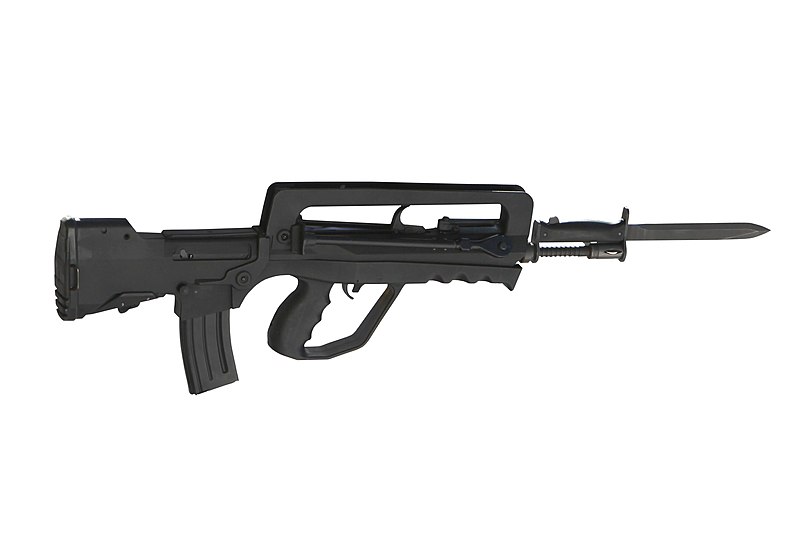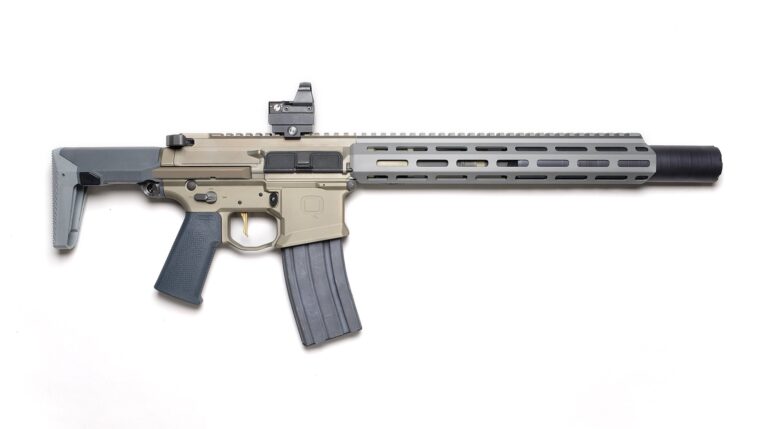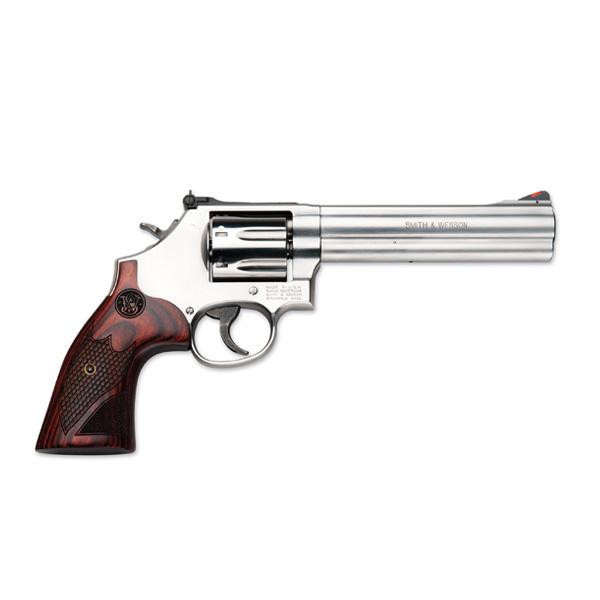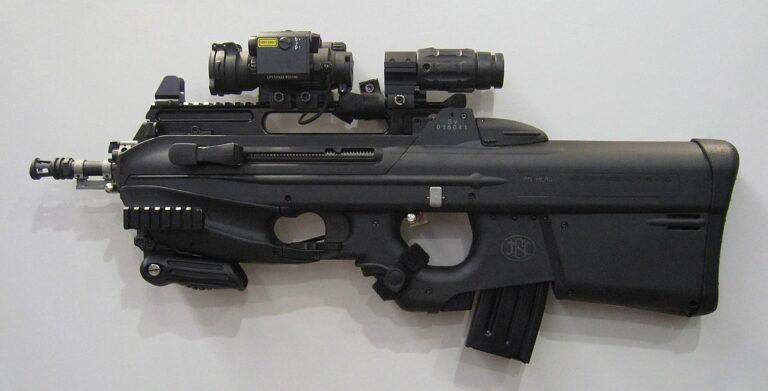Introduction
The FAMAS (Fusil d’Assaut de la Manufacture d’Armes de Saint-Étienne) is an assault rifle designed and produced in France. Introduced in 1978, it became the French army’s main weapon until its gradual replacement by the HK416F. Its bullpup configuration, reliable operation and high rate of fire made it a symbol of the French army for several decades.
FAMAS history
The idea of a national assault rifle was born in the 1960s, when France was looking to replace the MAS 49/56 rifles in its inventory. Rather than adopt a foreign model, such as the American M16 or theSoviet AK-47, France chose to develop its own rifle.
Development and adoption
The project was entrusted to Manufacture d’Armes de Saint-Étienne (MAS), who developed a rifle using a bullpup configuration, inspired by British and Austrian concepts. After several prototypes, the FAMAS F1 was adopted by the French army in 1978.
Use in conflicts
The FAMAS has been used in numerous conflicts, including :
Operation Daguet (Gulf War, 1991)
Interventions in Mali and Afghanistan
UN-mandated peacekeeping operations
Despite its effectiveness, it has gradually been replaced by the HK416F due to difficulties in sourcing spare parts and the obsolescence of certain components.
Technical data
| Calibre | 5.56×45 mm NATO |
|---|---|
| Weight | 3.61 kg (F1) – 3.8 kg (G2) |
| Overall length | 757 mm |
| Barrel length | 488 mm |
| Magazine capacity | 25 shots (F1), 30 shots (G2) |
| Firing rate | 900 to 1,100 shots/min |
| Effective range | 300 to 450 meters |
| Mechanism | Gas borrowing, tilting cylinder head |
| Configuration | Bullpup |
Ergonomics and design
The FAMAS is designed for great maneuverability, thanks in particular to its bullpup configuration, which allows a long barrel while reducing the overall length of the weapon.
Advantages of bullpup configuration
Compact size: ideal for urban combat and confined spaces.
Greater precision: thanks to a long barrel optimizing projectile ballistics.
Balanced weight: the low center of gravity provides greater stability.
However, this configuration also has some disadvantages:
Case ejection close to the face: Requires special version for left-handers.
Slower recharging: As the charger is located behind the handle, changing it is less instinctive.
FAMAS versions and upgrades
FAMAS F1
First version adopted in 1978.
Uses special 25-shot magazines.
Very reliable, but difficult to upgrade.
FAMAS G2
Introduced in the 1990s.
Compatible with STANAG 30-shot magazines (M16).
Improvements in materials and ergonomics.
FAMAS Valorized
Last improved version before being phased out.
Addition of Picatinny rails for installation of modern optics.
Comparison with other assault rifles
| Model | Caliber | Weight (kg) | Barrel length (mm) | Firing rate (cps/min) |
| FAMAS F1 | 5.56×45 mm | 3,61 | 488 | 1 100 |
| HK416F | 5.56×45 mm | 3,7 | 368 | 850 |
| M16A4 | 5.56×45 mm | 3,77 | 508 | 700-900 |
| Steyr AUG | 5.56×45 mm | 3,6 | 508 | 750-850 |
The FAMAS offers a high rate of fire, superior to most of its competitors. However, its initial incompatibility with NATO magazines and the obsolescence of certain parts led to its replacement by more modern models such as the HK416F.
Contemporary use
Although gradually phased out of service, the FAMAS remains in use in certain units and in the reserve armament of the French army. It is also appreciated by some collectors and military weapons enthusiasts.
Conclusion
The FAMAS is an emblematic assault rifle that has marked the history of the French army. Thanks to its bullpup configuration, high rate of fire and robust design, it has served for many years in various theaters of operation. Despite its gradual replacement, it remains a benchmark in the history of modern combat weapons.









